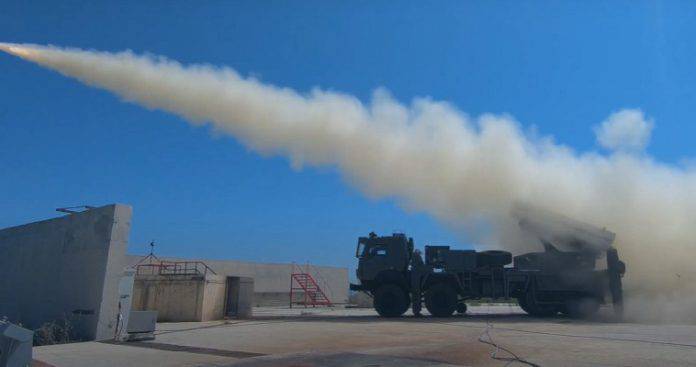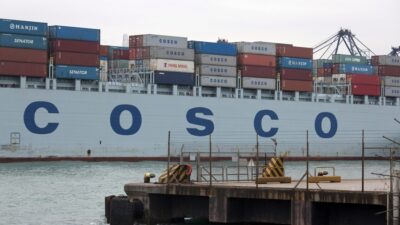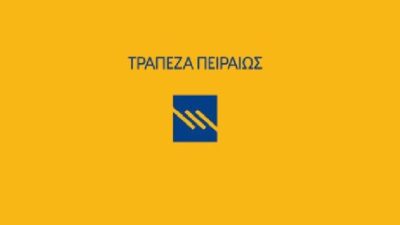Kostas Grivas: Frigates are good, but detterence needs other weapons
17/11/2020
One of the great “occupational diseases” of the military throughout history is their reluctance to keep up with the changes in the art, science and technology of war and to adapt to the new environment. Contrary to popular belief, these changes are not always related to technological developments.
An army can develop more and more technologically advanced weapons systems, but these are at odds with the operational environment. A high-tech army may be threatened by weapons based on more primitive technologies, but which will target the Achilles heel of more technologically advanced systems.
Another common occupational disease of troops around the world is compartmentalization that occur between Branches (Army, Navy, Air Force), between Arms (Infantry, Armor, Artillery, Signals/communications, Engineer), and even between individual weapon systems. as a result, everyone “makes their own war” and acquires a gladiator mentality.
Thus, there is a tendency to consider how an infantry group can deal with another infantry group, a fighter aircraft with another fighter aircraft, one ship, another ship, a tank vs another tank, marginalizing combined weapons interbranch and joint operations methodologies. Related to this pathogenesis is the confinement in simplistic schemes regarding combat capabilities. This is a trap, which leads to a chimerical search for the ultimate weapon, or the perfect fighting methodology.
The example of Yom Kippur
Successful armies, such as the Israeli, have also been affected by this “disease”. The success of Israeli tanks in the Six Day War and, to a lesser extent, in the 1956 Sinai War, led to overconfidence in the capabilities of tanks, detached from artillery and infantry.
The result was the Yom Kippur War in 1973, when Israeli armor was crushed in the first phase of the conflict, when Egyptian infantry crossed the Suez. The Israeli tanks were faced with the portable anti-tank missiles. The first-generation AT-3 Sagger (9M14 Malyutka) guided anti-tank missiles and RPG-7 unguided anti-tank rocket launchers destroyed the Israeli tanks, which were sent to “trample” the Egyptian infantry.
Probably a similar situation threatens the Greek Armed Forces today. There is a phenomenon of “denial” in the psychiatric sense of the word. One denies the existence of what one considers an unpleasant reality, which requires actions that are outside the framework of “normalcy”. The reason for the existence of Turkish land-based anti access and area denial networks (A2 / AD).
Thus, the highly polarized debate over which frigate Greece should buy pays little attention to the Turkish reconnaissance-strike networks, which – in the author’s view – are the biggest threat to the Greek surface ships in the coming years.
The dangerous A2 / AD networks
We must understand that weapons such as anti-ship ballistic missiles (ASBMs) do not belong in the realm of fantasy, as some in Greece believe. They have been a reality for many years. Because these systems have been identified with China, there is often the “argument” that the Aegean is different from the China Sea, so the threats do not exist.
The reality is just the opposite. The smaller the marine space, the more dangerous A2 / AD networks become, precisely because they can use more weapons. From short-range ballistic missiles and cruise missiles, to regular artillery systems and “mutated” heavy infantry weapons. The latter include the Israeli Spike NLOS missiles, which, very wisely, the Greek politico-military leadership decided (?) to acquire some time ago. However, they are not alone.
Similar weapons are the Serbian ALAS missiles guided by fiber optics and their range is between 25 and 60 km. The most impressive, in terms of performance, weapon of this category, is the Russian missile Germes. This system uses the Vikhr anti-tank missile as a base, which is mounted on a rocket engine that transports it to the target area and releases it there.
In this way it achieves the impressive range of 100 km and the impressive speed of 1.3 km per second. This makes it very difficult to stop and maximizes the destructive effects on the target thanks to the very high kinetic energy offered by the high speed. The rocket is radio-guided, or self-guided with a heat-seeking head. Similar weapons are being developed in China and elsewhere.
What is Turkey developing
Such systems are easy for Turkey to procure. It is rather a matter of time before it develops its own, given the progress it has made in developing and building domestic anti-tank missiles, such as UMTAS. It achieves a maximum range of eight km, launched from Bayraktar UCAVs and can be equipped with a heat search head for autonomous guidance to the target in the terminal phase of attack.
In fact, we know that the Turks have already developed anti access and area denial systems. Last September, the Turkish company Roketsan presented a system of systems for attacking land and sea targets. This system includes the TB2 Akinci aircraft and the TRGL-230 multiple rocket launcher, which launches 230mm rockets with semi-active laser guided (SAL) guidance.
TB2 conduct target acquisition, guiding the rockets, whose range reaches 75 km. And this is just the tip of the iceberg. It is a given that Turkey is developing (probably already has) similar strike/reconnaissance networks, which can hit surface units at a distance of more than 100 km.
These rockets do not have to be guided by laser designation. Infrared (IIR) heads can also be placed on them to look for the thermal trace of the target, so that they do not need pointing in the terminal phase of attack.
A related program is the EPIK (Electro-optical Precision Kit) produced by the Israeli company Rafael. This is a thermal guidance system, based on the Python 3 air-to-air missile warhead, mounted on 122mm rockets and converted into precision-guided weapons, which are guided by the thermal trail of land, sea, and air targets.
The threat of reconnaisance/strike networks
Therefore, we must take it for granted that in the coming years multi-level reconnaisance/strike networks will be based on the Turkish coast, which will have maritime and air “extensions”, using unmanned aerial vehicles (UAVs) and surface vessels (USV), which will locate the large surface units of the Navy and attack them with sweeping saturation attacks, inactivating their defenses.
In addition to UAVs and USVs, electronic warfare systems will be used to detect target ships using their electronic media emissions, such as radar. Turkish Early Warning and Control (AEW & C) aircraft can also play the role of an ISTAR. Their powerful MESA electronic scanning radar can also detect surface ships over long distances.
Nor does it make sense to say that the Turkish Air Force will attack the Turkish reconnaissance-strike networks, as many have argued that it will. Because Turkey also has aviation, as well as air defense systems. And one wonders what the Greek fighter jets will do first. Will they inactivate the Turkish air defense? Will they chase multiple rocket launchers, rocket trucks, speedboats and aircraft? Or will they face the Turkish fighters, which is their main job?
The discussion about frigates is a fetish
The debate over which is the best frigate is fetishistic. We must understand that any large Greek surface ship, American, French, or from any other source, will have a disadvantage not only because of the short range of its weapons, but also the small range of its sensors. It will therefore need to act near the Turkish coast to take part in the hostilities.
This means that this will make its destruction most likely! Only any large surface unit that has the ability to project power from long distances and consequently will be able to operate outside the death zone of the Turkish A2 / AD networks will be a valuable asset of the Greek combat structure. It’s that simple!
Finally, we must also, at some point, keep up with the times and realize that these A/2/AD networks are as if they were made to order for Greece! This is because our country has the archipelago structure of the Aegean. This means that while Turkish A2 / AD systems are based on a line along the coast of Asia Minor, the corresponding Greek systems can be diffused throughout the Aegean, forming an impenetrable death net for anything that would penetrate it, surface ships, helicopters. or unmanned aerial vehicles.
In a sense, while the Turkish A2 / AD architecture is two-dimensional, the corresponding Greek (if and when developed) will be three-dimensional. Of the weapons required to create this architecture, many already exist in the Greek arsenal and it is enough to integrate them into a single network structure. What needs to be obtained is relatively cheap, while many technologies are commercially available, or can be developed in Greece. So the issue is not whether we can, but whether we want to.





